 "/>
"/>
 "/>
"/>

在綿亙萬里的古絲綢之路上,古都長安曾是耀眼奪目的世界經濟、文化中心;而當代西安是“一帶一路”國家戰略下引領中西部開放發展的創新引擎。“絲路科學城”是西安高新區于2021年啟動建設的國際化科學城,也是引領西安建設“雙中心”(綜合性國家科學中心和區域科創中心)的核心支點。
如何平衡西安深厚的歷史文化積淀與高新科技所驅動的“硬核”發展?景觀設計在新城發展過程中將扮演怎樣的角色?筑格對話AECOM公司景觀部門負責人李程(Lee Parks),帶您走進景觀建筑師的獨特視角。
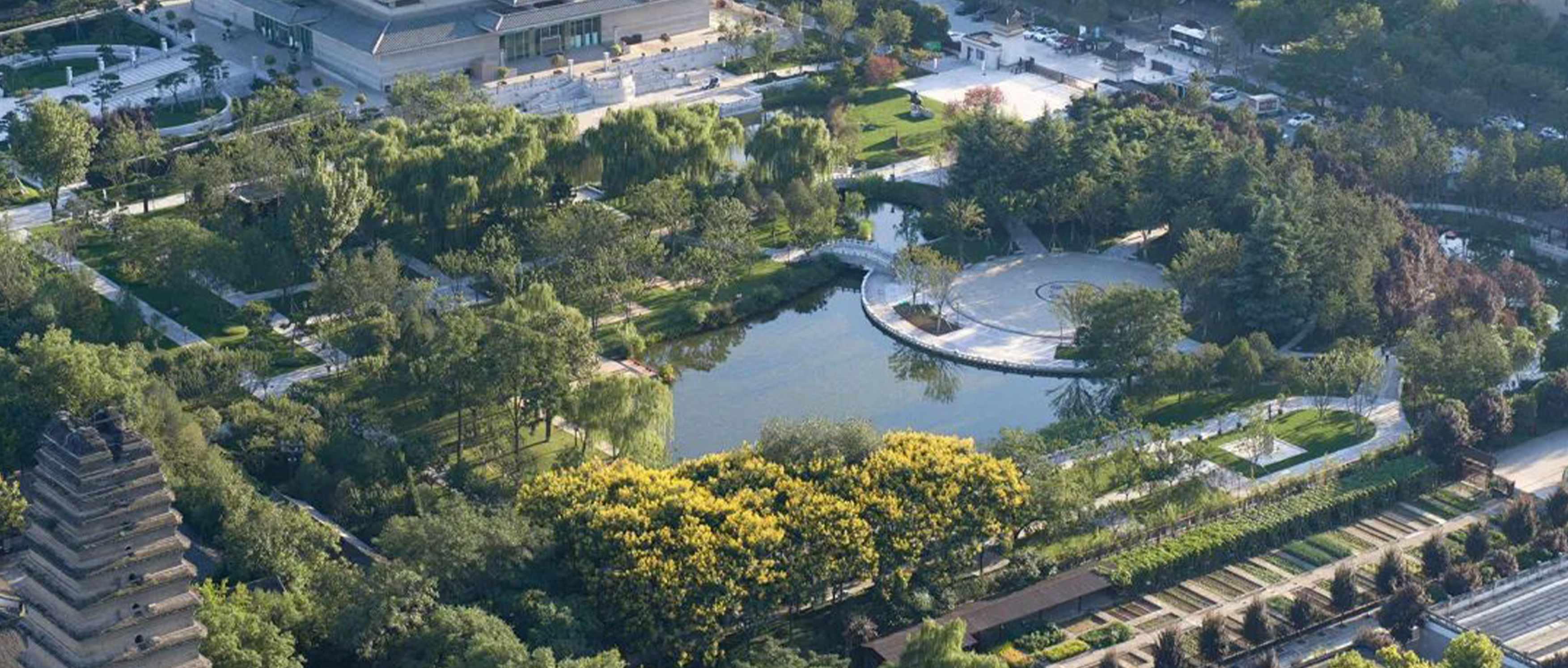

在綿亙萬里的古絲綢之路上,古都長安曾是耀眼奪目的世界經濟、文化中心;而當代西安是“一帶一路”國家戰略下引領中西部開放發展的創新引擎。“絲路科學城”是西安高新區于2021年啟動建設的國際化科學城,也是引領西安建設“雙中心”(綜合性國家科學中心和區域科創中心)的核心支點。
While the ancient capital of Chang'an was once an international economic and cultural center on the Silk Road stretching over Asia and Europe, contemporary Xi'an is an innovation engine leading the development of central and western China, under the national initiative of "One Belt, One Road". "The Science City of the Silk Road" is an international science hub initiated in 2021 by the Xi'an Hi-Tech Zone, and also Xi’an’s pivoting point to build a "Dual Center" (a “comprehensive national science center” and a “regional technological innovation center”).
如何平衡西安深厚的歷史文化積淀與高新科技所驅動的“硬核”發展?景觀設計在新城發展過程中將扮演怎樣的角色?筑格對話AECOM公司景觀部門負責人李程(Lee Parks),帶您走進景觀建筑師的獨特視角。
In the process of urbanization, how to balance the historical and cultural heritage of Xi'an with the economic development driven by high-tech? What is the role of landscape in the process of urban development? ArchiDogs were honored to interview Mr. Lee Parks, the Head of Landscape at AECOM, sharing the unique perspective of a landscape architect.


歷史文化建設從來不是一朝一夕的成果,從大明宮到小雁塔,西安的十幾年間,在城市公共空間中做出了策略性的改變。如何“重現歷史”、將歷史融入現代化公共空間,這不僅是建筑師的命題,更是景觀設計師對細節和空間體驗的追求。
Historical and cultural construction is never the result of a single day. Xi 'an has made strategic changes in the urban public space in the past decade from Daming Palace to the Small Wild Goose Pagoda. How to "reproduce history" and integrate history into modern public space is not only the proposition of architects but also the pursuit of details and spatial experience of landscape architects.

您在2008年參與了大明宮國家遺址公園的前期規劃,2021年又主持設計了西安小雁塔歷史文化片區的綜合改造。在這十幾年間,您如何看待西安在歷史文化建設方面的有哪些策略性的改變?
You have participated in the pre-planning of Xi’an Daming Palace National Relic Park in 2008, as well as the renovation of the Small Wild Goose Pagoda district in 2021. What is your opinion on Xi’an’s strategic changes over the past decade?

2008年,在大明宮國家遺址公園項目的國際競標之前,我參與了它的前期規劃,研究如何在呼應歷史與考古發現的同時,規劃一個更加生態友好的遺址公園,但我沒有參與后續階段的規劃與設計。最終建成的遺址公園尺度非常壯觀,我認為這和當時大家十分強調唐代長安的宏偉氣勢有關,設計者需要體現出大明宮的宏大空間,以彰顯長安的歷史地位。
In 2008, I was involved in the pre-planning of Daming Palace which was a study before an international competition was held. The point of that study was to try and get a much greener national relics park and responsive to archaeology and history, but the end result of that park, which I wasn't involved in, is very grand in terms of design. I think at that time, there was a lot of emphasis on the magnificence of the ancient capital and creating an enormous space for celebrating history.
十幾年之后的今天,小雁塔片區更新項目所關注的重點則有所變化。我們團隊的設計以人為本,對社區更為友好,同時更為環保、具有可持續性。作為設計師,我很歡迎這樣的變化,它使設計師能夠為游客以及當地居民創造更具普惠性的公共空間。
After a decade, working on the Small Wild Goose Pagoda, the emphasis has been changed, to a more human-oriented, community-friendly, greener, and more sustainable design. It was a really nice and welcome change. And, it enabled us as designers to really create a place for tourists and local residents in the community to make it much more inclusive.
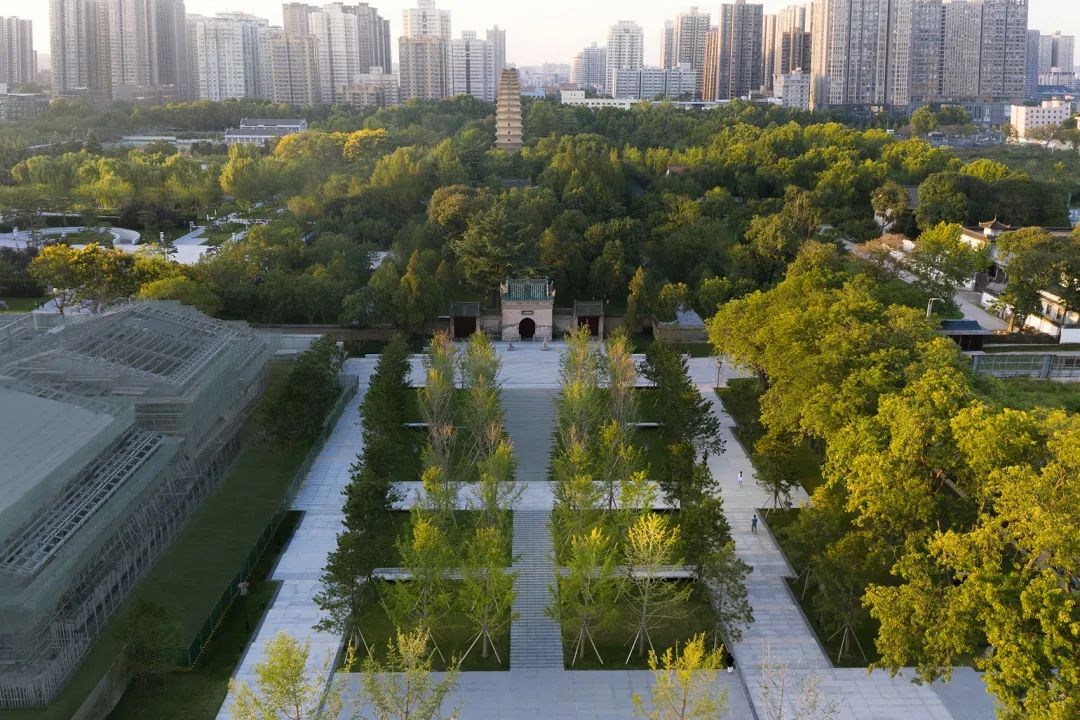
小雁塔歷史文化片區綜合改造項目 西苑鳥瞰 ?丘文建筑攝影-邱日培
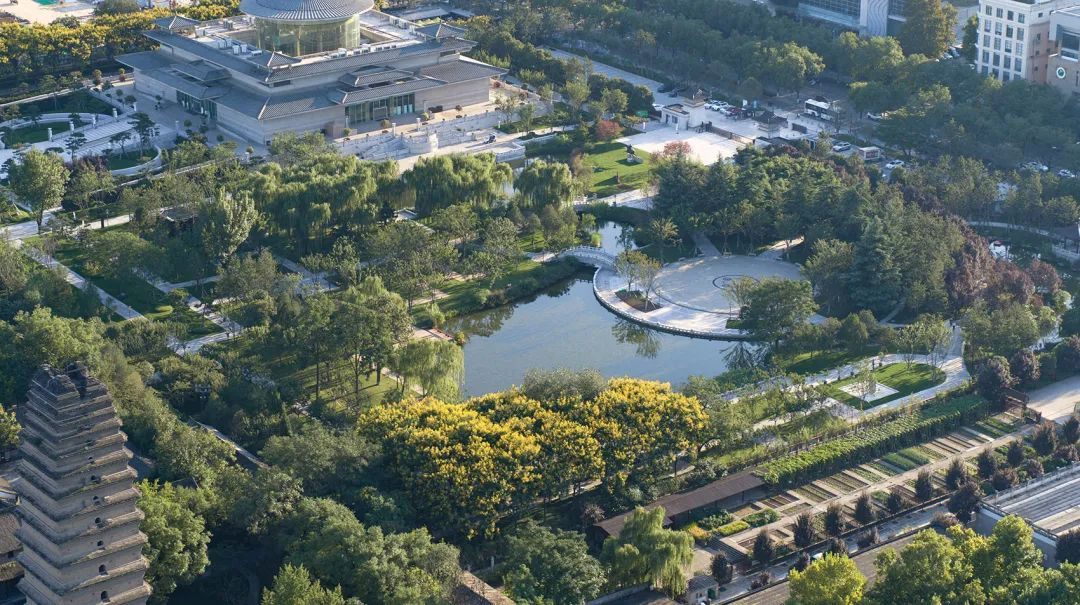
小雁塔歷史文化片區綜合改造項目 軸線視角 ?丘文建筑攝影-邱日培

在小雁塔片區項目中,可以看到很多有趣的細節,就像給大家創造了公園中尋寶的體驗,你們如何打造這樣的空間?
We've seen lots of fine details in the Small Wild Goose Pagoda project. Could you please tell us more about these details? It’s kind of like treasure-hunting in the landscape.

小雁塔是唐代古跡,我們的部分創作靈感也來源于西安博物院所展出的一些唐代古物。在設計過程中,我們希望用當代的方式表現這些傳統的形式,將傳統融入景觀地面鋪裝、公園設施的一些細節中,這樣所呈現的傳統敘事就不會太直白。
I was very inspired by the pagoda itself and some of the artefacts in the Xi'an museum which includes relics from the Tang Dynasty. We wanted to be able to present those in a more contemporary way, integrating those into some of the subtle details whether that's paving or furniture to tell the story, but not too strong.
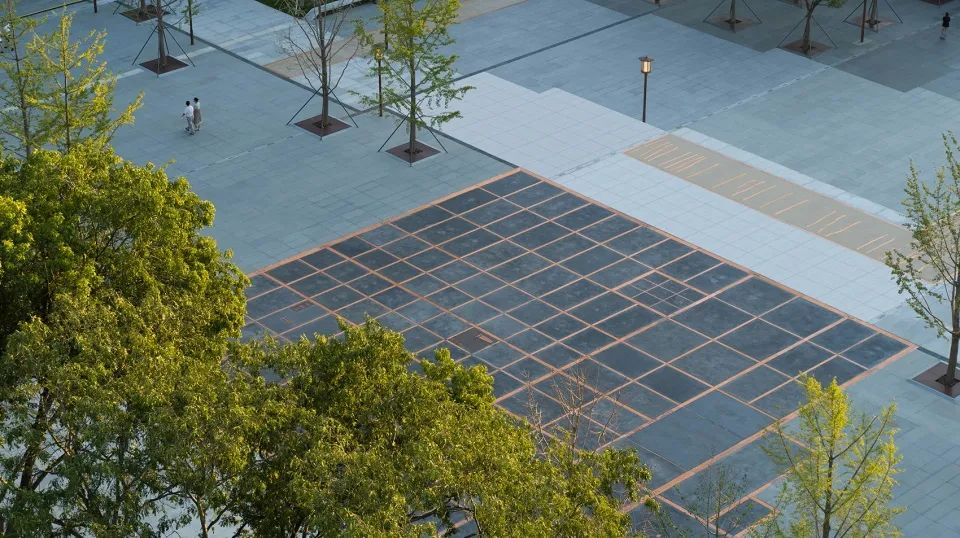
“雁歸里坊”廣場鋪裝印刻著唐代108坊與保留的古車轍印的歷史記憶。?丘文建筑攝影-邱日培
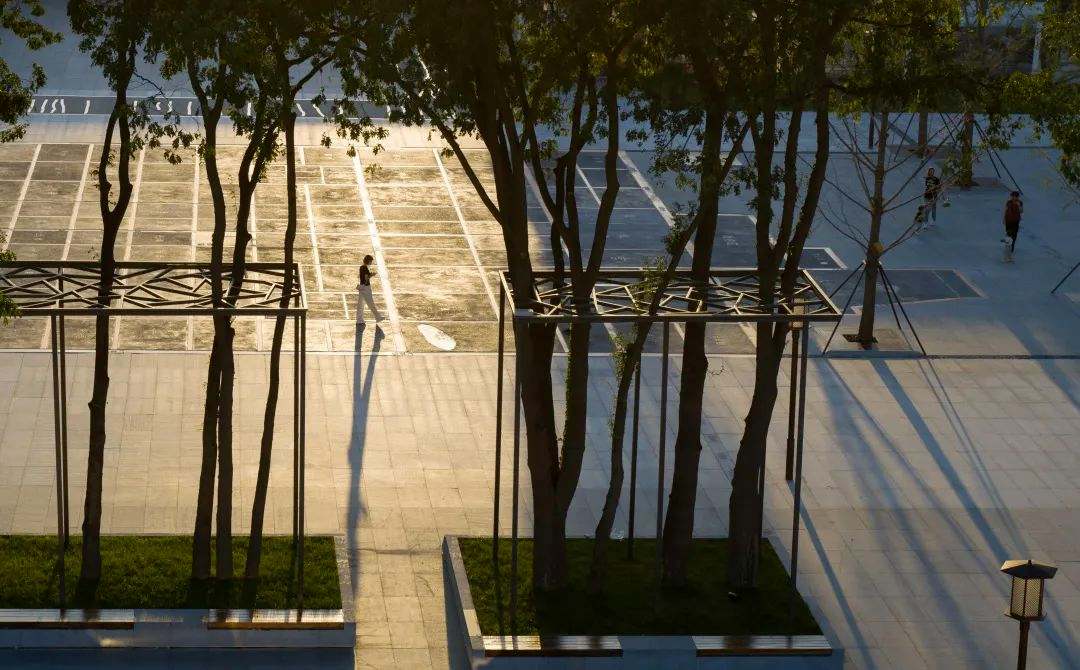
保留的列植皂莢,增強了歷史片區的渾厚氣勢,在主要的通行廊道處進行疏伐,打開視線。設計創新優化了大樹支撐結構,使廣場空間更安全,活動空間范圍更大。?丘文建筑攝影-邱日培

于景觀細節感知文脈,將小雁塔密檐式建筑語言、唐三彩等文化特色融入空間細節。?丘文建筑攝影-邱日培

絲路科學城是西安高新區于2021年啟動建設的新區域,目前已初具規模。科學城中的高新科技產業在促進經濟發展的同時,也可以被運用于歷史文化保護與生態環境修復。
"The Science City of the Silk Road" was first established in the Xi'an Hi-Tech Zone in 2021, and it is now taking shape. While promoting economic growth, high-tech industries in this smart city can also benefit historical preservation as well as the environment.

在當前這個古今交匯的時空語境下,從建筑或城市的角度出發,如何平衡歷史遺產保護與科技發展?
Currently, in establishing the High-Tech Zone, Xi’an is pursuing development in terms of high-tech and information digitalization under the “One Belt One Road” policy. In the meantime, Xi’an’s profound historical identity is very much cherished by the public. In your opinion, how do we balance the historical context and technological development?

作為一個景觀建筑師,我認為,科技與歷史保護應該是協調一致的,兩者之間不應有沖突。值得我們深思的是如何妥善運用技術,保證其產生的結果是積極的。對設計師來說,使用各種技術來表達設計意圖、提升設計效率;對于使用空間的居民及消費者來說,設計師應該保證科技被運用于遺產保護,及提升社會公平與包容性等方面。
As a landscape architect, obviously, technology and historic conservation should be aligned. There shouldn't be a conflict between these two. The secret for us is how to leverage technology for a positive outcome. Designers use technology to convey our design intent and use that technology to improve the efficiency of design. But then the technology for the residents, consumers and people who use the spaces we create, should be used in a way that really does help protect relics and promote social equity and inclusion.

小雁塔歷史文化片區綜合改造項目 ?AECOM

在您看來,以科技發展為導向的高新區,在發展中所需要的核心元素是什么?
In your opinion, what's the key element that a technology-oriented high-tech district needs in its development?

我認為,城市發展中需要運用科技造福社會與環境,用科技應對氣候變化、生物多樣性喪失等當下面臨的嚴峻挑戰。信息數字技術的創新利用,將幫助我們更好地應對氣候變化危機,最終為居民、社區甚至野生動植物帶來福祉。
I think technology should be used in ways to benefit society, to benefit the environment, to tackle issues like climate change or biodiversity loss. What we need to do is use data and information in a way that enables us to do better for people, for communities and for wildlife, and to tackle the big issues of our day which are climate-change related.
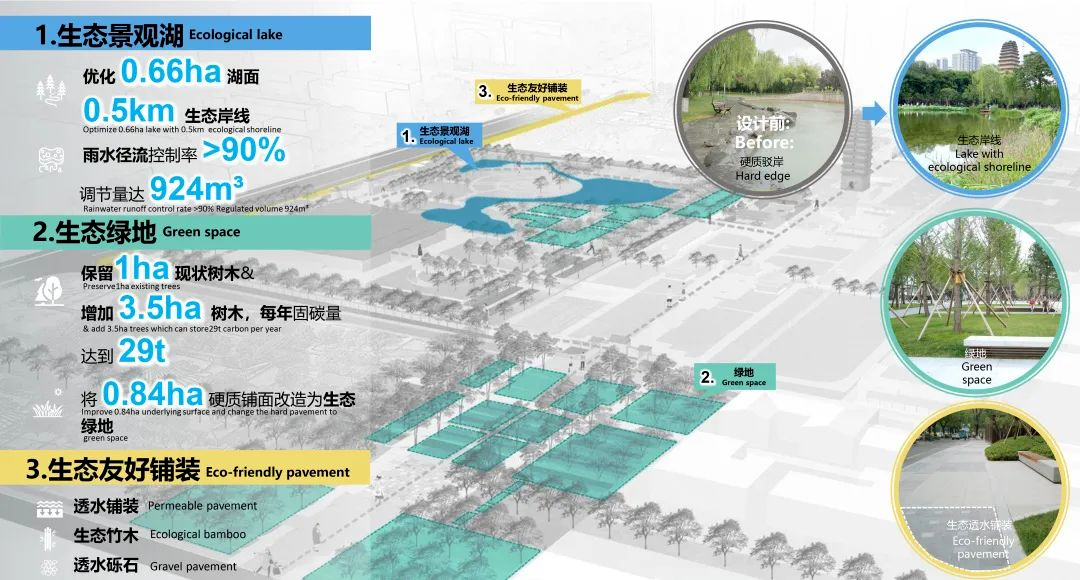
小雁塔片區海綿設施布局 ?AECOM&西安小雁塔景區運營管理有限公司

小雁塔片區生態策略 ?AECOM

西安高新區絲路科學城的建設正如火如荼地展開,作為設計師如果有機會參與到高新區的城市建設中,您會有怎樣的建議?
The High-Tech Zone is now taking shape. If you had a chance to participate in its urban development, what would you like to do? Do you have any suggestions?

我想到了“一帶一路”與科技發展的關系。近年來,中國在植樹造林方面付出了很大的努力。如果有可能的話,高新區可以建一座處理環境數據的研究中心,搜集高新區的生態綠化數據,用數字科技搜集和管理“一帶一路”沿線重新造林與生態恢復的情況。這樣,西安可以作為絲綢之路生態走廊的起點,在修復地球環境、維護生態多樣性、應對氣候變化等方面樹立表率。
I was thinking about the idea of the Silk Road and technology. I know that over recent years, there has been a lot of effort to increase afforestation. I think that the science and technology base can have a research center or science-base where data is collected, to look at this ecological greening from the high-tech district along the Silk Road, to imagine reforestation, habitat restoration, and to monitor all of that through digital technology. So this should be the start of a Silk Road Ecological Corridor restoring the planet, thinking about biodiversity gain, and tackling climate change.

小雁塔歷史文化片區綜合改造項目 ?丘文建筑攝影-邱日培

在城市建設中,景觀設計對優質公共空間的創造起到重要作用。“景觀(landscape)”這一概念,超越街區以及城市的尺度,甚至能打破國界。在應對氣候變化和生物多樣性危機這樣的全球議題時,也起到不容忽視的作用。
In urban development, landscape architecture plays an important role in creating good public space. The idea of landscape goes beyond the scale of an urban neighborhood or a city, and even extends beyond the limit of national boundaries. Its role in addressing global issues such as climate change and the biodiversity crisis cannot be ignored.

科技發展日新月異,近年來數字虛擬、人工智能等高新科技如雨后春筍般涌進大眾市場,您認為建筑設計、城市規劃或景觀設計應該如何與新技術結合?或者您曾在哪個項目中嘗試結合嗎?
The technological revolution has brought about new concepts like VR and AIGC, which have become mainstream in recent years. How do we integrate these cutting-edge technologies into architecture, urban planning, or landscape architecture? Have you tried any of these technologies in your previous projects?

AI 圖像生成和可視化技術的發展正給市場帶來飛速變革,因此不少建筑師和設計師都開始為未來的工作感到擔憂,但我認為技術進步將幫助促進設計師的想象力和創造力。新技術將在初始的概念設計階段發揮很大作用;同樣的,VR(虛擬現實)和數字建模技術在與客戶溝通以及施工過程中都很有幫助,可以將設計的所有細節可視化,大大提升設計效率。
The AI imagery and visualization is rapidly changing in the market, and many architects and designers worry about their jobs in the future. However, technology is there to really help imagination, creativity, and innovation. It plays a very important role in the beginning concept stage. Then, when we use things like VR and digital models of our projects, we can help clients understand the designs we're creating, and visualize all of the details to help with construction.
AECOM在上海設計的楊浦大創智數字公園(KIC 481)是楊浦區首批數字公園之一,設計突破了傳統景觀設計的方式,包含了對公共空間資產化和科技賦能的探索,借助虛擬數字技術的力量,通過“線上+線下”聯動的數字公園營造新模式,更好地為城市居民服務。我們的實踐正處于數字化轉型階段。
AECOM has a project in Shanghai in the Greater Knowledge Innovation Community (GKIC). It’s one of the Yangpu district’s first digital parks and will enable school children to engage in education, which would involve technology companies to install technology platforms for forums and engagement. We are also involved in the digital transformation of our practice.
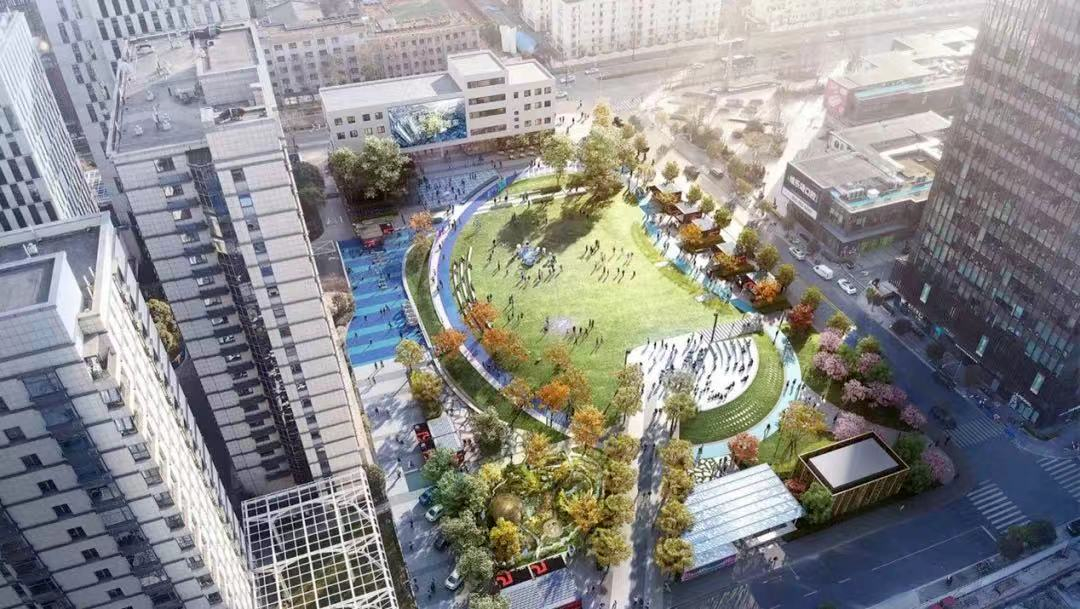
上海KIC 481數字城市 ?AECOM

您曾在SRC街景研究中心的論壇中提到,街區的意義遠在街區之外。現在的城市或景觀設計如何平衡經濟、環境、文脈與社會的需求?
At the Conference of Streetscape Research Center, you stated that the significance of street blocks goes beyond the blocks. In this era, overloaded with digital information and surrounded by highly modernized urban space, how can urban or landscape design balance economic, environmental, social, and cultural needs?

這是一個很大的議題。在全球范圍內,已經有很多關于環境、社會、治理(Environmental, Social, Governance, 簡稱ESG)的討論,該議題關注長期可持續發展與韌性。我之前所提出的關于街景的觀點是指我們不能僅僅在規劃紅線中考量一個項目,而是要考慮到該項目對周邊社區的影響,以及場地與周邊生態空間的連接。在增加優質公共空間與社區資源的連通性、可達性方面,景觀設計起到很重要的作用。
This is a very big topic. From a global perspective, there's a lot of talk about environmental, social and governance strategies, or ESG. ESG should also think about resiliency,the long-term sustainable development. In the talk I did for the Streetscape Research Center, the idea of going beyond the block was that we don't look at a project from a red line. We look at how it impacts surrounding communities or connects to several surrounding green spaces. So, landscape architecture plays a really important role extending the connectivity and the access to good public space and community resources.
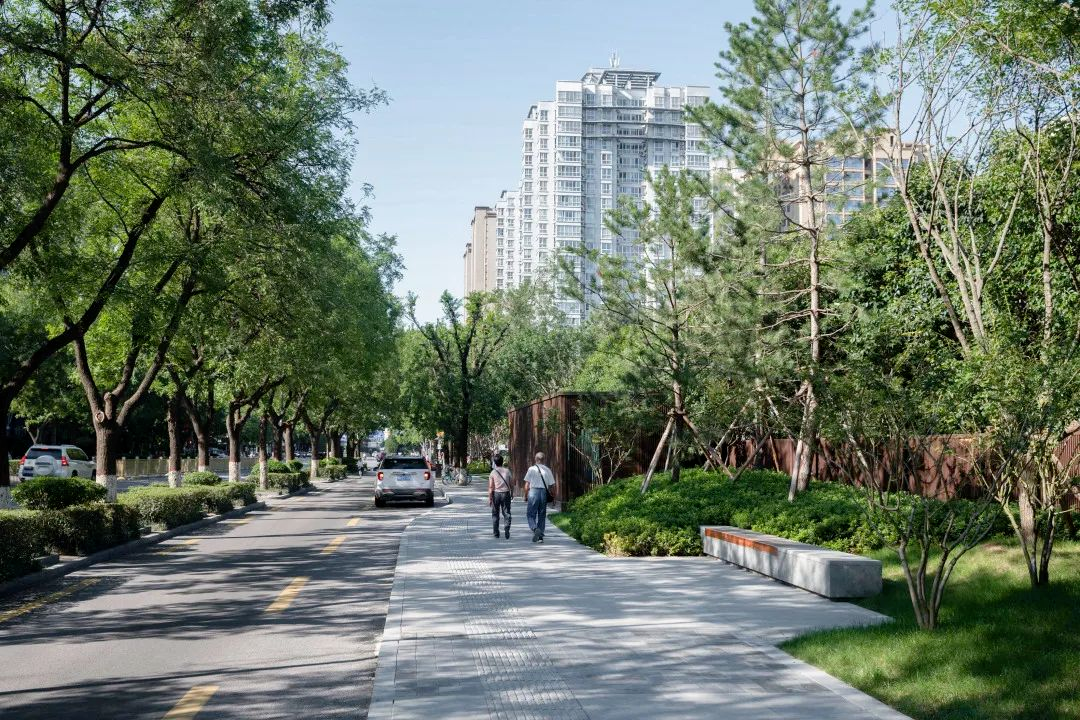
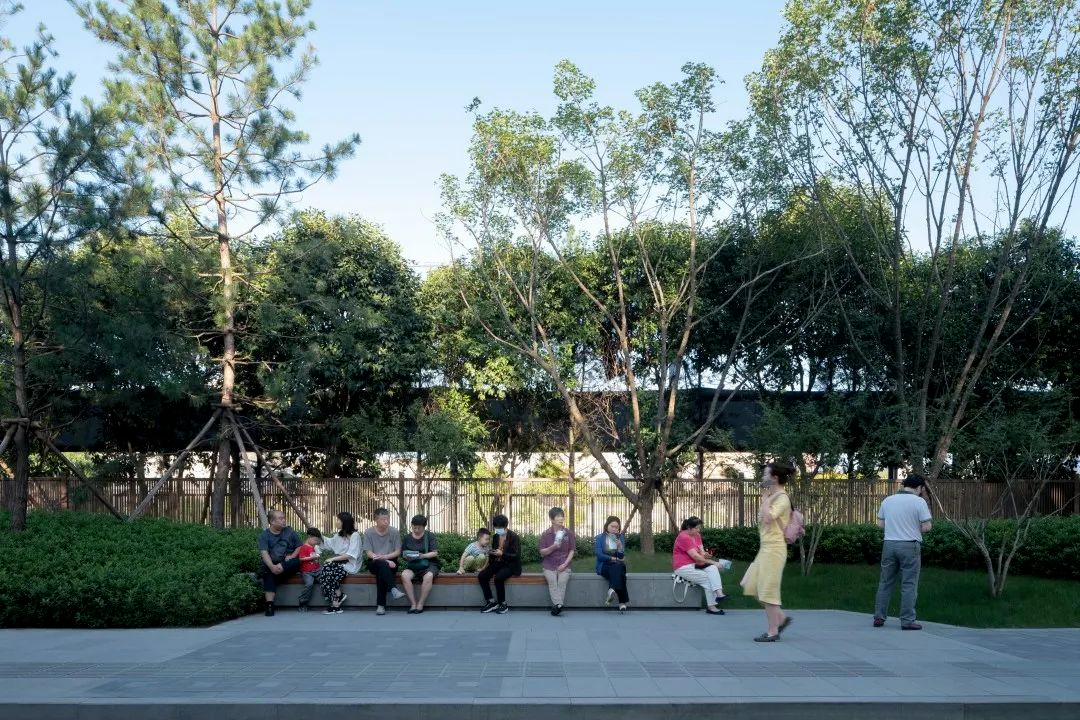
小雁塔片區改造后的城市界面 ?丘文建筑攝影-邱日培

不知您是否感覺到,在中國的業界,建筑設計似乎比景觀設計更重要,景觀設計似乎是為建筑設計服務的。但在其它一些國家,建筑、景觀等設計師是通力合作的。(在中國的市場)需要倡導“景觀設計先行”嗎?
I just thought of another question. In China, it seems that architecture is more important than landscape, but I know that in other countries, landscape architects and architects cooperate together. Do you think landscape should get first and then invite architects into the landscape?

我所在的AECOM公司為倫敦奧運會所做的總體規劃就是由景觀設計師所推動的。景觀能夠、且應當涵蓋我們所創造的社區,以及我們所居住的城市。就我個人而言,景觀是沒有邊界的,甚至超越了國界。當你坐在飛機上俯瞰大地的時候,你會發現我們的城市就坐落在地景(landscape)之中。
AECOM was responsible for the London Olympic Master plan, and it was driven by a landscape architect. Landscape can and should really encompass the communities we create, the cities that we live in. For me, landscape has no borders. It goes beyond our country and our national border. When you're in an airplane, our cities are sat within landscapes.
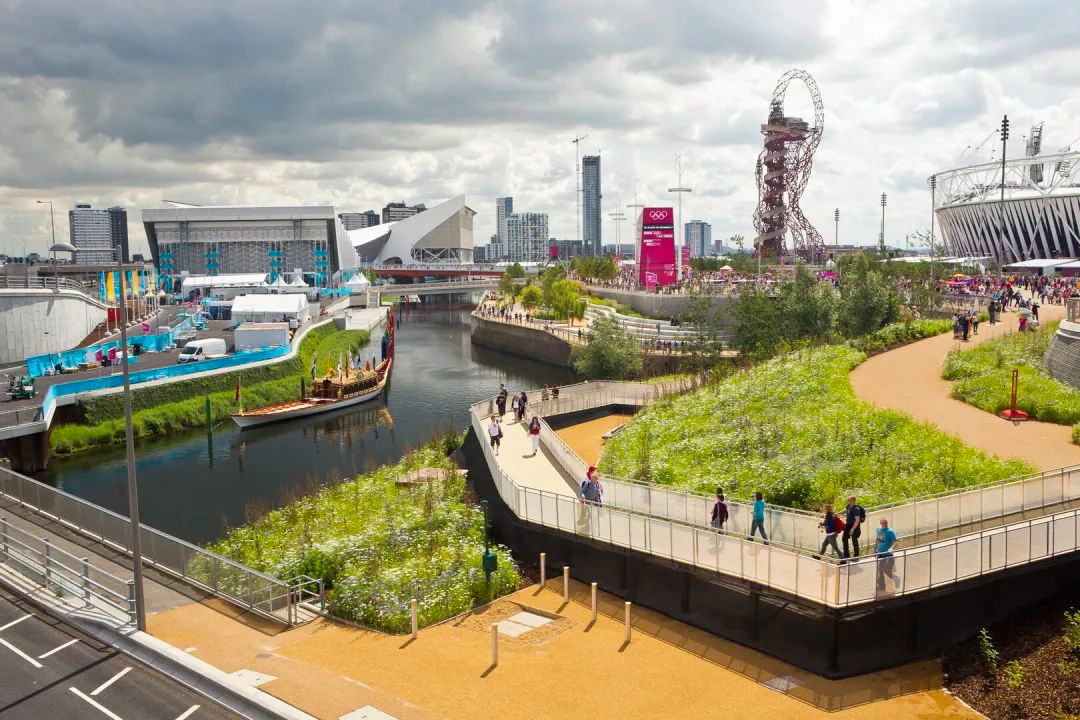
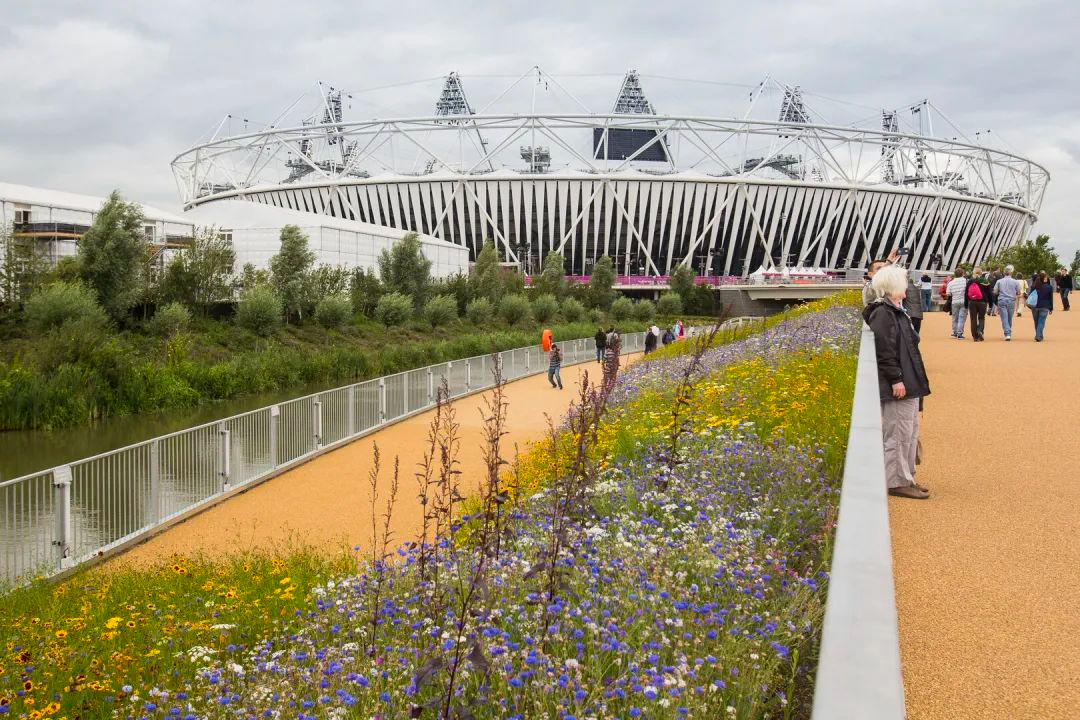
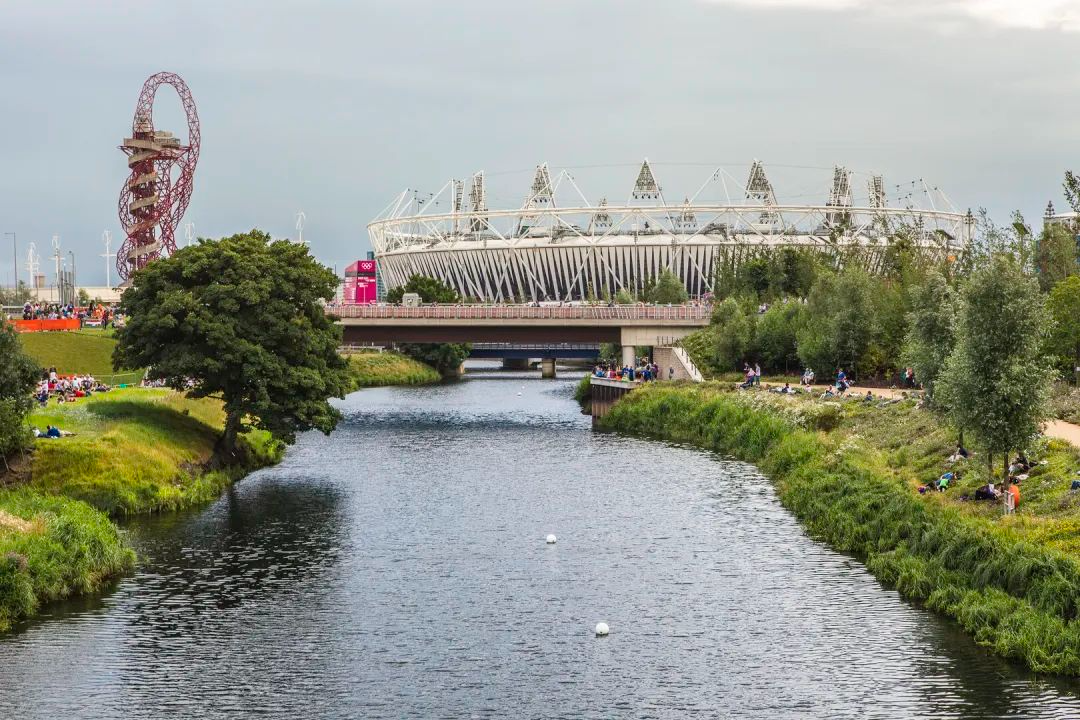
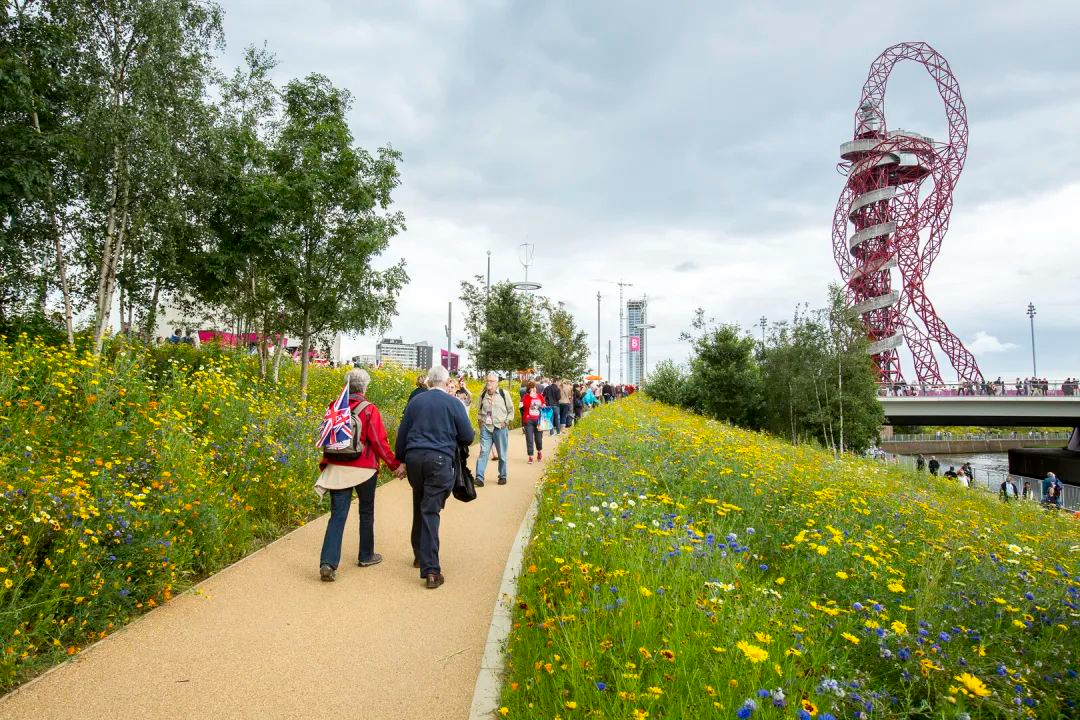
2012倫敦奧運會 ?AECOM
今天,當我們面對諸多全球性挑戰,景觀設計在應對氣候變化和生物多樣性危機等方面正發揮著極其重要的作用,它在我們的城市發展中扮演很重要的角色。
I think landscape is incredibly important, and in today's society with big issues that we face globally, particularly in terms of climate change and biodiversity loss, landscape architecture plays a very important role in our city development.

在科技時代的城市發展中,景觀的力量不容小覷:通過營造更具包容性、可持續性的城市公共空間,為歷史文化街區增添活力。在更宏觀的層面,景觀連接起城市街區與周邊生態空間,將城市與自然相連,甚至跨越國界。西安,這座“一帶一路”開放之都,不僅可以通往歷史文化絲路、科技創新發展絲路,也可以將高新科技與景觀設計結合,打造生態環境保護的綠色絲路走廊。
For urban development in this technological age, the power of landscape cannot be underestimated. It can revitalize historical heritage by creating a more inclusive and sustainable public space. At a macro level, landscape connects communities to the surrounding green space, and cities to the greater nature. This is a connectivity which may even extend beyond national borders. Xi’an, as an open metropolis of the Belt and Road Initiative, can not only lead to a Silk Road of history and culture, of technological development and innovation, but also a green Silk-Road- corridor of environmental protection, by integrating landscape with high-tech development.
發文編輯|Aaron
審核編輯 | Miranda
采訪/撰寫 | Ming、Zhenyu、Jiqing / Yutong
版權?建道筑格ArchiDogs,轉載請聯系media@archidogs.com
若有涉及任何版權問題,請聯系media@archidogs.com,我們將盡快妥善處理。

